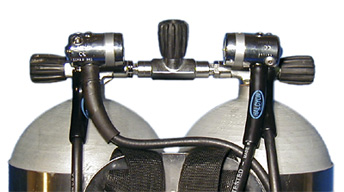How about regulators that free flow in case of problems? yay or nay?
I think that means pretty much everything except some Poseidons. Yes, you want a reg that freeflows if it fails - with a tec DIR setup you will just shut it down anyway.
Welcome to ScubaBoard, the world's largest scuba diving community. Registration is not required to read the forums, but we encourage you to join. Joining has its benefits and enables you to participate in the discussions.
Benefits of registering include
How about regulators that free flow in case of problems? yay or nay?
6) Chances are even if you invest in a single regulator now thinking that when you eventually go to doubles that you'll just buy another regulator, in the end you'll end up buying a matched set of regulators specifically for doubles diving. Because by the time you go to doubles and want that 2nd regulator, models will have changed and you won't get an exact match.
I was looking at the Salvo regulators and a set from Phil Ellis's store at one point in time when I got the DiveRite RG-2500's instead.
The 2nd stages front covers should be removable in water, such that simple repairs like a diaphragm that is not seated properly can be handled.
And, how does one determine optimal hose routing? None of the literature I've found on the Oxycheq first stage, for example, talk about hose routing.
And, how does one determine optimal hose routing? None of the literature I've found on the Oxycheq first stage, for example, talk about hose routing.
Forgive me if this has been hashed over before. I've done searches for information on DIR-compliant regulators, and have only turned up two - the scubapro MK20 and apeks DS4 seem to be the most popular, but the websites I've found these on seem to be a little older.
And, how does one determine optimal hose routing? None of the literature I've found on the Oxycheq first stage, for example, talk about hose routing.

